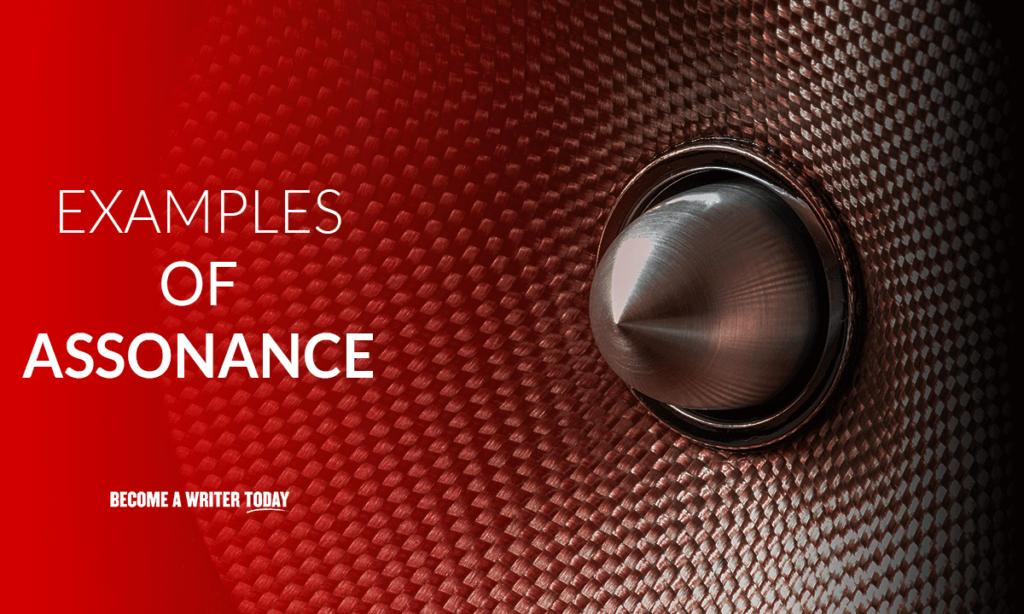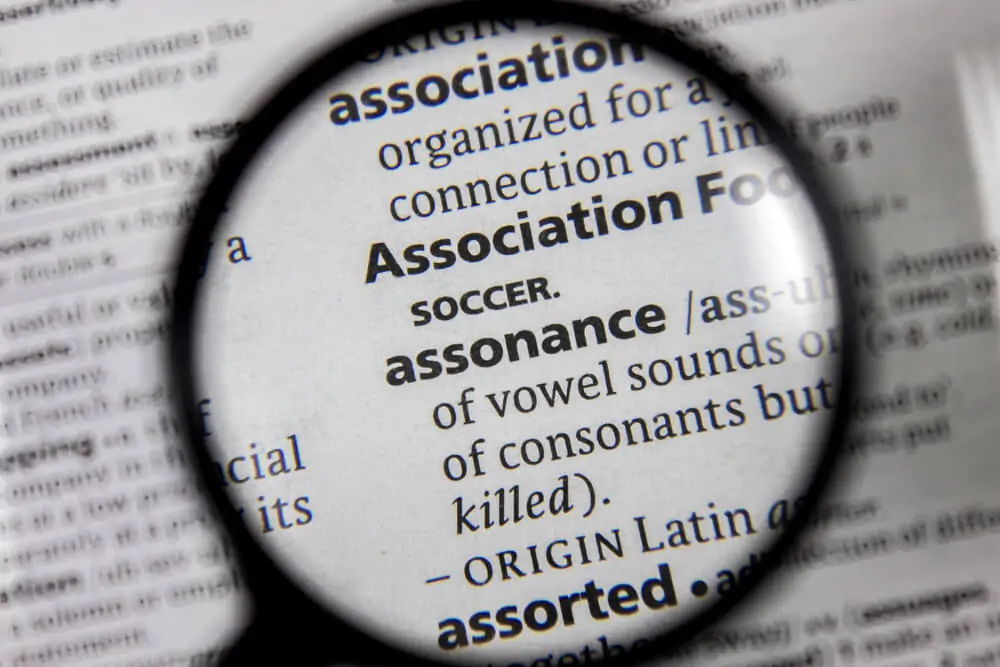Assonance can make your writing more interesting, but before you can use it, take a look at these examples of assonance.
Literary devices make writing more interesting, and assonance is one example of a literary device you can use in your English writing.
This device repeated similar vowel sounds in two or more non-rhyming words that are in close proximity to each other in the piece. Unlike alliteration, which has the same consonant sound at the start of the piece, assonance is the repetition of sounds in the middle of the words.
The best way to understand this is to look at examples of assonance. This guide will help you see how famous writers used this technique, which then will help you decide if you want to add it to your own writing repertoire.
We tested dozens of grammar checkers, and Grammarly is the best tool on the market today. It'll help you write and edit your work much faster. Grammarly provides a powerful AI writing assistant and plagiarism checker.
Contents
Common Everyday Examples of Assonance

Before looking at examples of assonance in literature, let’s take a look at some common uses found in everyday speech. These common phrases all show examples of this literary device. Say them out loud to hear how the vowel sounds repeat:
- Chips and dip
- Keep your eye on the prize
- See you later alligator, after while crocodile
- The cat is out of the bag
- Stranger danger
- Wedding bells
- Nutter Butter
Tongue twisters are another place where you see assonance. Here are some popular ones :
- She sells seashells by the seashore. (short and long e sounds)
- How much wood would a woodchuck chuck if a woodchuck could chuck wood? (short u and oo/ou sounds)
- I scream, you scream, we all scream for ice cream. (long e sound)
- A proper copper coffee pot (short o sound)
Examples of Assonance in Songs
Assonance in the English language can often create internal rhyme and rhythm within words that actually are not rhyming words. As such, songs are another place where you may see instances of assonance. Some uses of assonance you may recognize include:
- The rain in Spain stays mainly in the plain (From the musical “My Fair Lady” by Alan Jay Lerner)
- Light My Fire (Title by musical group The Doors)
- Oh give me a home, where the buffalo roam (From “Home on the Range” by Daniel E. Kelley and Brewester M. Higley)
- A to the K, get in the way I’ll bring Dre (from “Patiently Waiting” by rapper Eminem)
- But some punks want to jump up with a sharp tongue and their fronts up. (From “Bangarang” by hip-hop group Doomtree)
- I must confess that in my quest I felt depressed and restless. (From “With Love” by rock musician Thin Lizzy)
In each use of assonance by a musician, intentional word choice with repeated vowel sounds makes the words flow more readily, which is perfect for singing.
Examples of Assonance in Literary Works
While you can find assonance in just about any type of literature, it is a poetic device, so poems are a common place to find it. In William Wordsworth’s poem “I Wandered Lonely as a Cloud,” the first stanza uses the long o sound frequently:
“I wandered lonely as a cloud
That floats on high o’er vales and hills
When all at once I saw a crowd,
A host, of golden daffodils;
Beside the lake, beneath the trees,
Fluttering and dancing in the breeze.”
In this verse alone, the long o sound is used five times in the first four lines, which is a clear example of assonance.
Here are some other well-known lines you’ve probably studied:
- Once upon a midnight dreary, while I pondered, weak and weary (From “The Raven” by Edgar Allan Poe)
- Stem end and blossom end, and every fleck of russet showing clear (From “After Apple-Picking” by Robert Frost)
- I do not like green eggs and ham, I do not like them, Sam I Am (From “Green Eggs and Ham” by Dr. Seuss)
- You stand at the blackboard, daddy (From “Daddy” by Sylvia Plath)
Assonance in Non-Poetic Works
Sometimes other writers use assonant words in writing that is not poetry. One of the most famous is “A Portrait of the Artist as a Young Man” by James Joyce. This quote repeats the short i sound eight times:
- “Soft language issued from their spitless lips as they swished in low circles round and round the field, winding hither and thither through the weeds.”
The Difference Between Assonance and Alliteration

Assonance and alliteration are similar literary devices because they both use repetition of letter sounds. However, alliteration is the repetition of consonant sounds at the beginning of the words, while assonance is a repeated vowel sound in the stressed syllables of the words.
Assonance, when used well, is subtler than alliteration, even though both require careful word choice.
The tongue twister “Peter Piper Picked a Peck of Pickled Peppers” shows both literary devices. Almost every word of this phase starts with “p,” which is an example of alliteration. However, it repeats both the short e and short i sounds, which is an example of assonance.
Assonance and alliteration are similar to each other in that the words need to be close to one another for the devices to have an effect on the reader. Most likely, a long poem will repeat vowel sounds or consonant sounds, but it’s only when they are next to one another that it grabs the reader’s attention. If you found this guide helpful, you might enjoy our oxymoron examples.
A Final Word on Examples of Assonance
Once you study some examples of assonance, you will find that they are easy to weave into your writing. Assonance, particularly in lyrics and poems, is quite powerful. Wield this literary device well, and you will be a better, stronger writer.
Keep in mind that, as with all literary devices, assonance can get over-used. Use this tool when it makes sense, but do not force it. If a better word choice works with your piece, go for it.
FAQs on Examples of Assonance
What are examples of assonance?
Assonance can be found in song lyrics and poems. Some everyday phrases that include examples of assonance are:
1. Fire light
2. The squeaky wheel gets the grease
3. Fleet feet
4. Delightful sight
What are some examples of assonance in literature?
Many poems include examples of assonance, such as “The Raven” and “The Bells” by Edgar Allan Poe. Other examples include:
1. “The Bee Meeting” by Sylvia Plath
2. “Do Not Go Gentle into That Good Night” by Dylan Thomas
3. “After Apple-Picking” by Robert Frost
